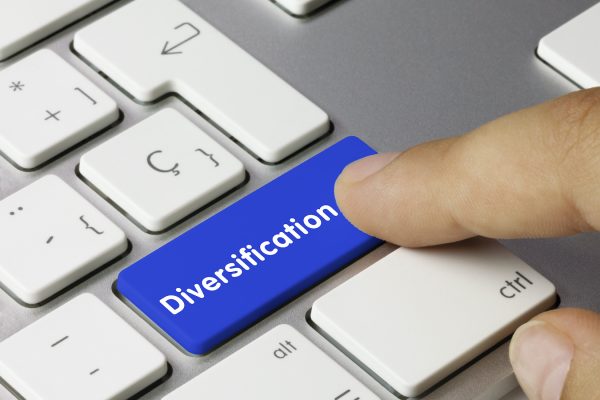The world has witnessed the failure of several banks over the past months, starting with Silicon Valley Bank and Signature Bank in the United States, followed by the collapse of the 167-year-old global firm Credit Suisse. These bank failures can have a devastating impact on depositors, including bankruptcy.
Similarly, the spectacular collapse of FTX, at the time one of the world’s largest digital currency exchange platforms, shocked account holders who suddenly faced the prospect that their money was gone. The losses rippled across the swath of digital currency platforms, significantly impacting the balance sheets of other crypto providers, most notably resulting in BlockFi’s chapter 11 bankruptcy in the U.S.
One month after FTX filed for bankruptcy, O’Neal Webster was engaged by a profitable British Virgin Islands company with significant exposure in the FTX collapse. The losses were so severe that the company faced insolvency. Notwithstanding, in conjunction with a local accounting and consultancy firm, we guided the company back to regular operations in about 100 days.
Below is a summary of what you should know when your BVI company faces a financial collapse caused by events out of your control.
Beware of Insolvent Trading
Under BVI law, a BVI company becomes insolvent when its liabilities are more than its assets – balance sheet insolvency – or cannot pay its debts as they fall due – cash flow insolvency. Several consequences result from a finding that a company is insolvent.
By far, the most critical consequences result from unlawful trading by company directors who know or ought to have known that the company was insolvent. If a director continues to trade under those circumstances, they can be ordered to contribute to the company’s insolvent estate from his or her personal assets.
Therefore, when a company suspects it may fall into insolvency, the first order of business is for its directors to halt any trading as soon as possible. Anything less exposes directors to personal liability. If the directors continue to trade, not only can a court order them to contribute their personal funds to the company’s insolvent estate, but any person or company that has received funds from the company may likewise be ordered to contribute to the estate.
Entering Bankruptcy
BVI insolvency legislation does not contain an equivalent to chapter 11 of the United States Bankruptcy Code. No specific provisions allow an insolvent BVI company to continue operating for the purpose of restructuring its debt or eventually returning to normal operations. The BVI Insolvency Act does, however, contain a provision for a moratorium on the repayment of an insolvent entity, but those provisions are not yet in force. The current provisions are geared towards winding down an insolvent BVI company’s operations, paying off its creditors and ultimately dissolving it.
Notwithstanding current BVI provisions, all is not lost. Some workarounds will allow an insolvent company to continue operations to restructure and return to solvency. BVI legislation allows for Plans of Arrangement, Schemes of Arrangements and Creditor’s Arrangements. Different provisions govern these options but effectively can be used by a company, working in conjunction with all (or in some instances, most) of its creditors to effect a restructuring of the company’s debts.
Some of these options are available before a company becomes insolvent and can be used to achieve other corporate goals, but that is beyond the scope of this article. For our purposes, we advised our client to apply to enter a voluntary insolvent liquidation and request the appointment of a light-touch provisional liquidator for the interim.
The appointment of the provisional liquidator is key. Ideally, a company will want a liquidator who understands its business and is willing to manage the operations pending a successful restructuring of its debt. This was extremely important in our case since the company was engaged in various crypto businesses. A liquidator who understands the nuances of the digital asset and cryptocurrency industry was crucial. This step should not be rushed. Fortunately, there are many excellent and knowledgeable BVI insolvency practitioners, and the company was able to secure the services of an appropriate liquidator.
In summary, if a BVI company cannot pay its debts as they fall due, one or more of its creditors will eventually file to put the company into liquidation. In such cases, the company loses all control of the insolvency. However, if the above course is followed and a provisional liquidator is appointed, it has, at the very least, the possibility of selecting an appropriate provisional liquidator and having some agency in the process. The liquidator will make an assessment and decide which, if any, of the various routes to restructuring would work best.
Exiting Insolvency
When implemented properly, a restructuring under one of the abovementioned procedures will buy the company time to negotiate with its creditors and avoid dissolution. A properly drawn-up and executed restructuring will ultimately allow the company to return to solvency and avoid insolvent liquidation. For this to happen, though, the principals of the company (its directors and officers) must devise a plan that deals with the debts owed to creditors. That may involve getting buy-in from creditors, whether by extending the repayment date for the debt, getting a partial debt write-off, obtaining new capital, or a combination of these and other strategies.
Unless a workable plan is in place, the court will be reluctant to discharge the provisional liquidator and allow the insolvent liquidation application to be withdrawn from the court. The court will be wary of allowing a company to withdraw the insolvent liquidation application only for it or a creditor to re-apply a few months later. The plan must, therefore, demonstrate that the company can again stand on its own two feet.
Once the plan is properly documented with the relevant agreements prepared and executed, the company can seek court approval and withdraw the insolvent liquidation application from the court.
In conclusion, saving your BVI company from liquidation due to events outside your control is not impossible, despite not having access to legislation similar to a U.S. chapter 11 restructuring. Importantly, directors must stop trading as soon as they think or know the BVI company is threatened by insolvency and should engage legal counsel for guidance in filing the appropriate applications with the court. Several workarounds exist to save your BVI company, such as petitioning the court for a provisional liquidator and establishing a viable plan to return to normal operations.
This content is for educational purposes only and should not be construed as legal advice. Each case is unique. O’Neal Webster invites you to contact the author of this article, Kerry Anderson, at kanderson@onealwebster.com for further information or to discuss the needs of your BVI company.
###



